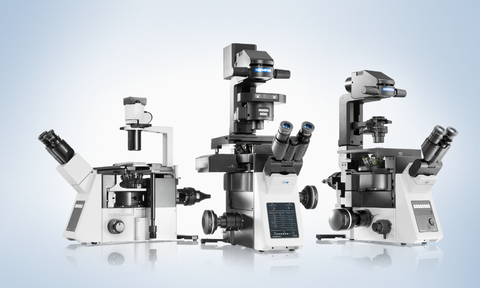
Three inverted research microscopes have been designed to offer flexibility and precision for a wide range of applications.
Newly introduced are the IX83, a fully automated high-end research microscope platform; the IX73modular microscope system that can be configured in manual, semi-motorized or motorized versions to benefit an extraordinary range of research applications; and the IX53 system microscope, designed for quick and efficient routine examination of multiple tissue samples.
Together the three microscopes in the series allow users total customization to meet current research demands, while providing flexibility to grow as their needs change. The stands provide a choice of manual control, encoded manual, semi-motorized operation, or fully automated high-speed motorisation.
The IX83 and IX73 are designed with a multi-story optical deck area that can be configured with one or two decks for the insertion of various optical components.
The decks make the microscopes modular, allowing the rapid plug-and-play insertion of magnification changers, filter turrets, a right side port, or other options.
Changing equipment and options is as easy as sliding out one deck insert and sliding in another, and both decks open out like file cabinet drawers for easy accessibility.
Beyond flexibility, the IX3 is a great platform for live cell imaging. The new systems offer an even higher level of mechanical and thermal stability than Olympus IX2 microscopes, which are renowned for their stability, ruggedness and imaging performance. The stands are built on a new frame designed for exceptional rigidity and thermal stability.
A low-profile ultrasonic motorised stage provides quiet, smooth, precise movement. All three systems employ the company’s proprietary UIS2 optics, which deliver ultra-sharp, bright images and are manufactured from lead-free glass.
The Real-Time Controller delivers precision in high-speed imaging, with microsecond timing accuracy for high-speed devices such as light sources, triggered cameras, and other TTL-controlled devices.
A new fly-eye fluorescence illuminator provides even, bright illumination across the specimen, allowing a much wider field of view and filling the chips of even large-format cameras. In addition, the IX83 is available with third-generation Olympus Zero Drift focus compensation (ZDC) technology, which allows accurate, consistent focusing during long-term time-lapse experiments.




